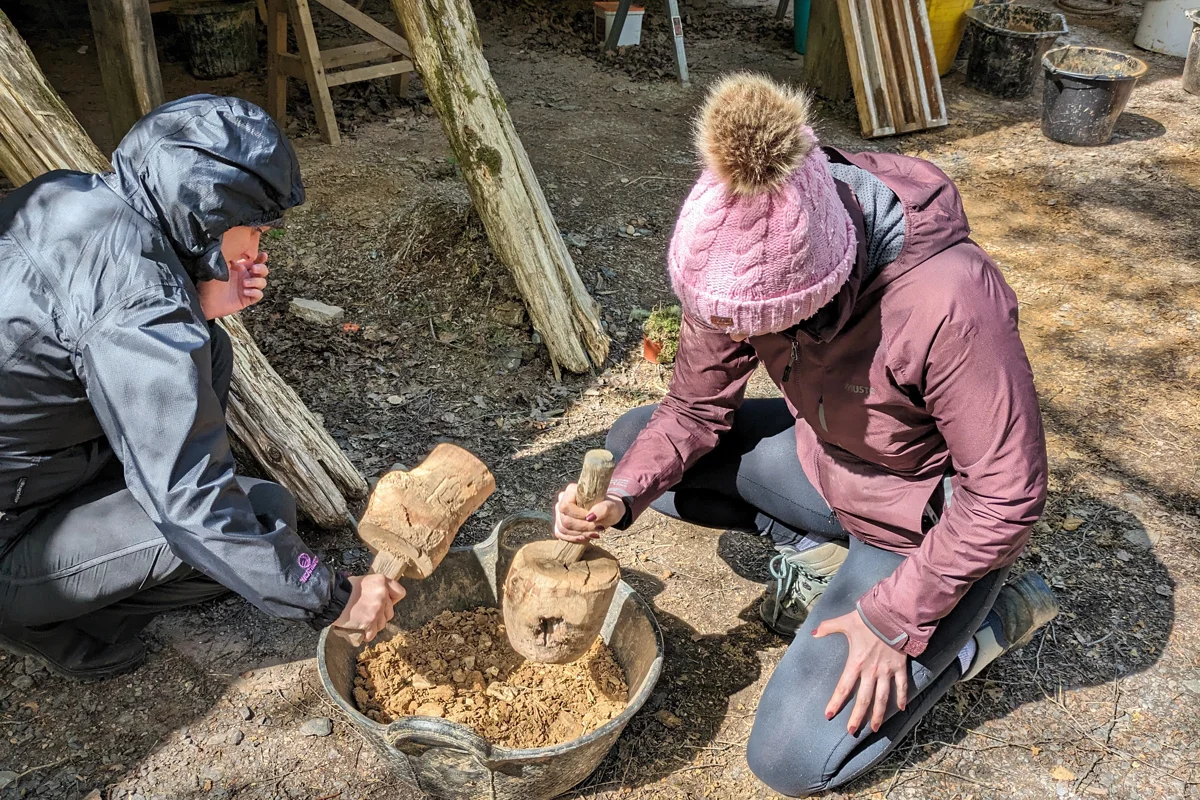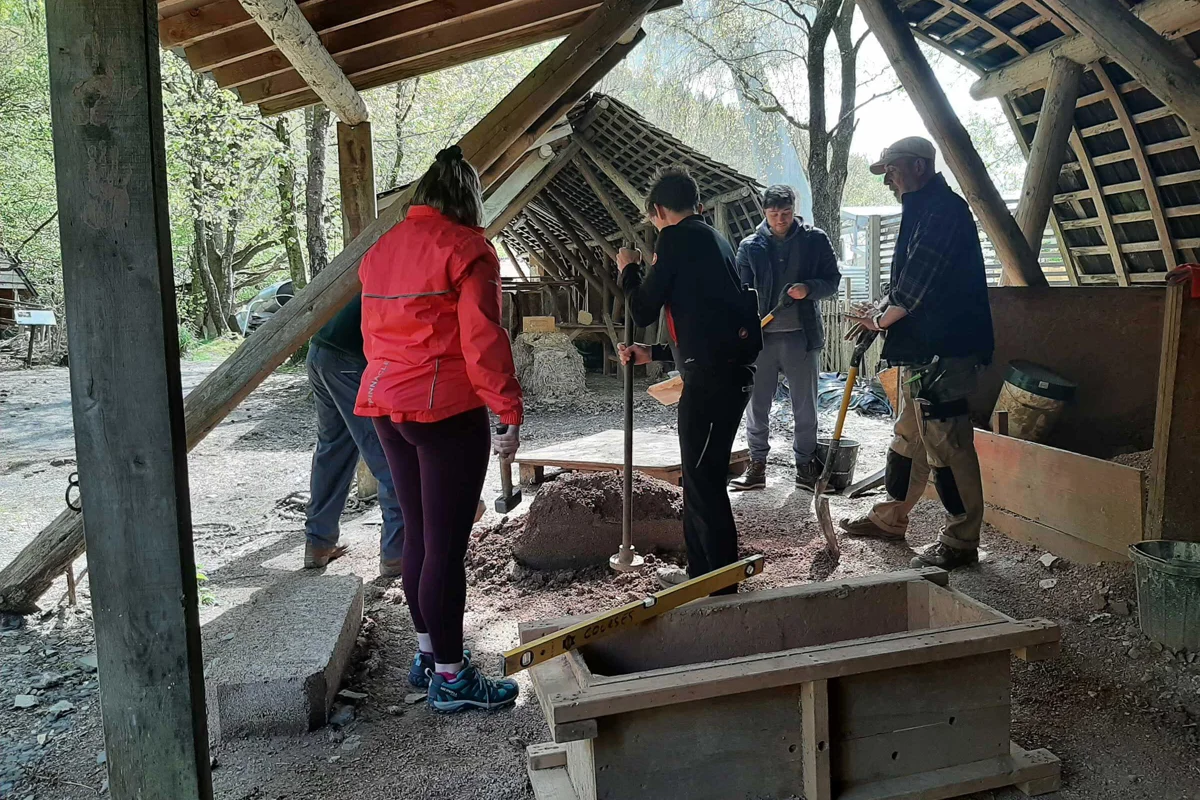Sustainability Crash Course: a visit to the Centre for Alternative Technology
Posted by: Oliver Bostock
Saturday 27th April, 6:40am. Normally at this time on a weekend I’d be fast asleep, but on this particular Saturday I was instead sat in the carpark of Bath Spa train station, sheltering from the drizzle of the British spring while I waited for my fellow CDT members to arrive. This weekend, instead of catching a lie in, 10 AAPS students (myself included) would be making the trip up to the Centre for Alternative Technology in Powys, Wales, eager to learn about all things sustainable living.
The Centre for Alternative Technology (or Canolfan y Dechnoleg Amgen – they’re big on Welsh here!) is a world-renowned eco-centre, environmental charity and centre of higher education based in Llwyngwern Quarry, near Machynlleth in mid-Wales. Closed to day visitors since 2023 but still open for group bookings and post-graduate teaching, the centre offers teaching across a range of environmental and sustainability topics, including green building and architecture, sustainable growing and renewable energy technologies. 4 sessions were booked for our visit: a wind turbine walk on day one, followed by a guided site tour, a sustainable buildings tour and a building with earth workshop on day 2.
Day 1:
After a scenic drive though the Welsh countryside, enjoying the sweeping sights of mountains, valleys, lakes, forests and the occasional castle, drawing bemused looks along the way from locals as we cruised through their picturesque villages in a Prius plastered with the turquoise chevrons and bold logos of IAAPS and the university, we reached CAT mid-morning. As we unloaded our kit, stretched our legs and settled into to the eco-cabin which would be our home for the night, bad news arrived; our guide for the day was ill, so the wind turbine walk was cancelled. Undeterred, we wolfed down some much-needed food (all vegetarian or vegan, and locally sourced where possible to limit environmental impact) and set out on a self-guided version of the walk instead.
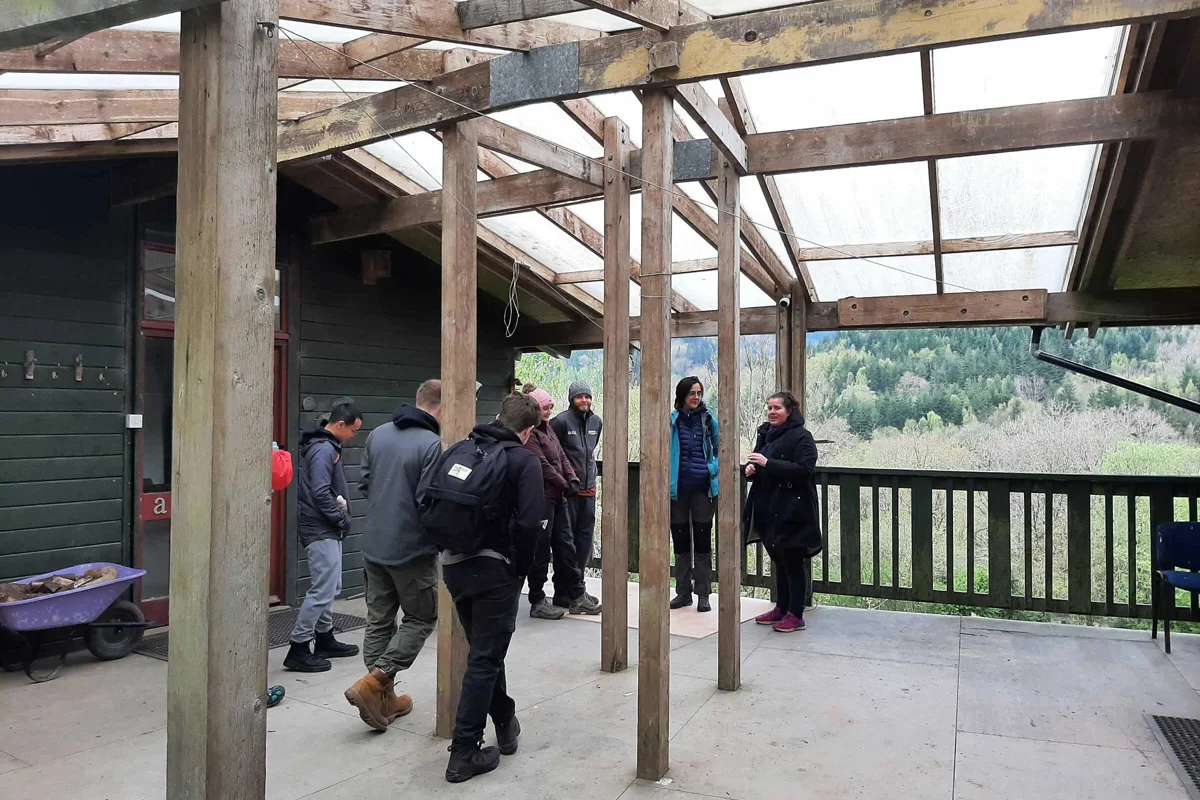

CAT meets the majority of its energy demands with renewable energy generated on site. Some of this demand is met by the solar panels adorning the roofs of the campus buildings, and some comes from wind turbines and a larger solar farm on the hills overlooking the centre. Our walk began with a swift scramble up the steep ridge above the centre, followed by a quick stop to take some photos and admire the panoramic views. The high winds on top of the ridge make it an ideal site for turbines, less so for umbrellas; Pete’s brolly might have been doing a great job of keeping the rain off him (and looked stylish to boot), but I was slightly worried it might be caught by a gust, sending him flying like a sustainability focussed Mary Poppins. Alas, his feet remained on the ground, denying us a glimpse of a novel form of wind-powered sustainable transport. After a walk through the woods we arrived at the turbine and solar farm further along the ridge, providing an opportune moment for Josh Best to provide us (and some local sheep) with a brief but comprehensive explanation of how wind turbines work. Who needs a guide when you’ve got transdisciplinary students?
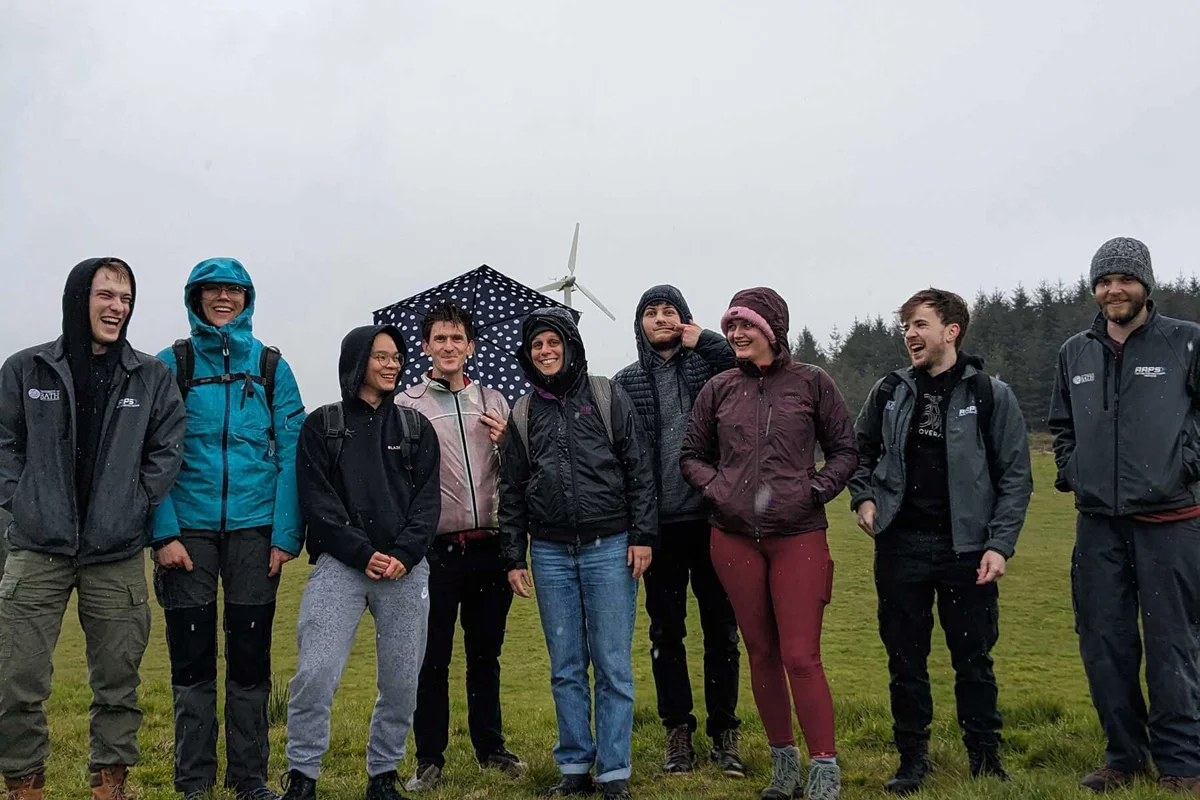
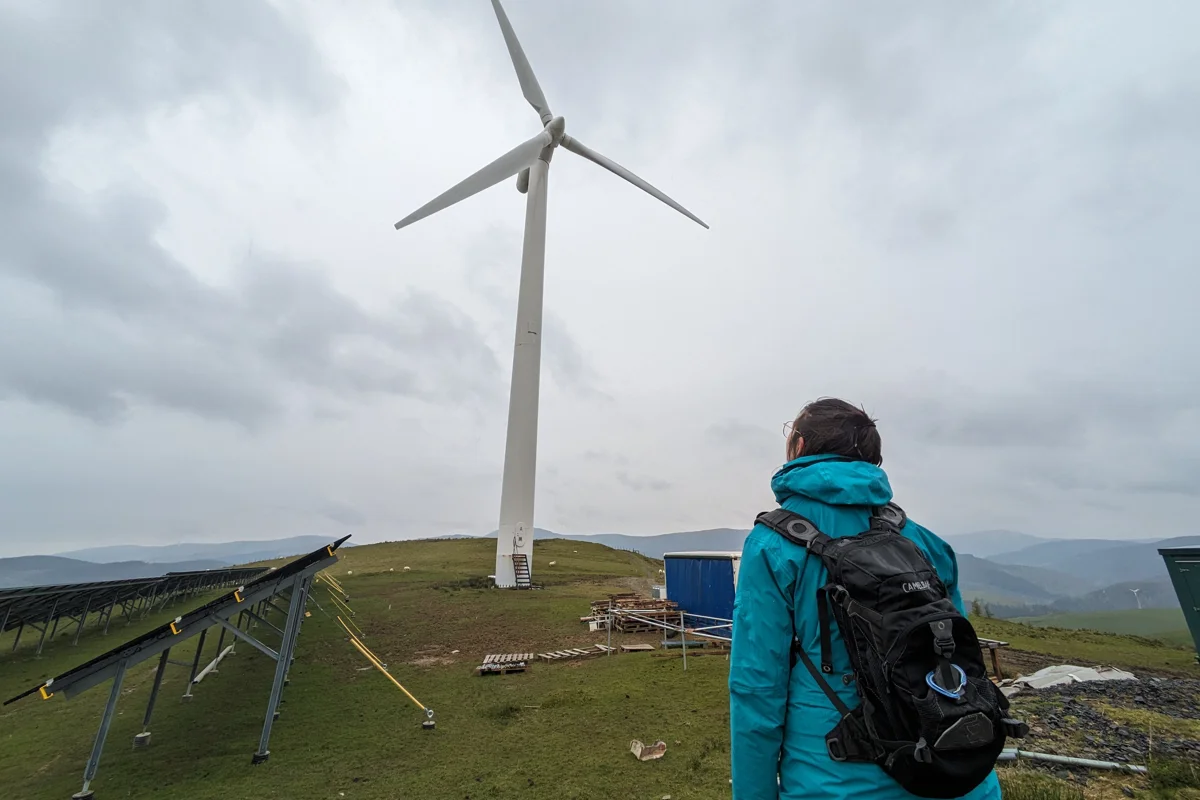

Returning to the centre, we were informed we could have a guided session after all: a wind energy workshop. Here we learned about the fundamentals of electricity generation and wind turbines, heard a little bit about the history of wind power at the centre and the future of wind power (including the slightly abstract solid-state wind power), and got hands-on with an example turbine, powering a bulb by spinning it by hand. Following this we returned to the eco-cabin and kept warm around the fire before heading to bed before a big day 2.
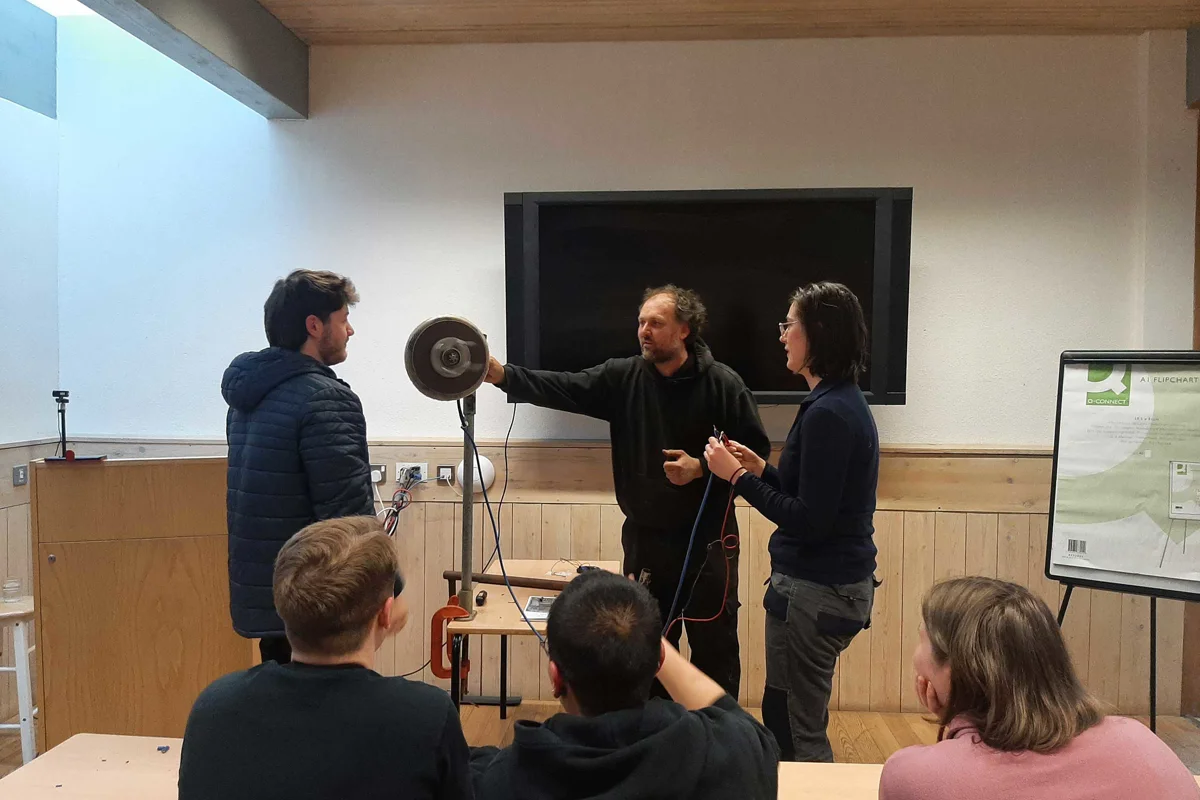
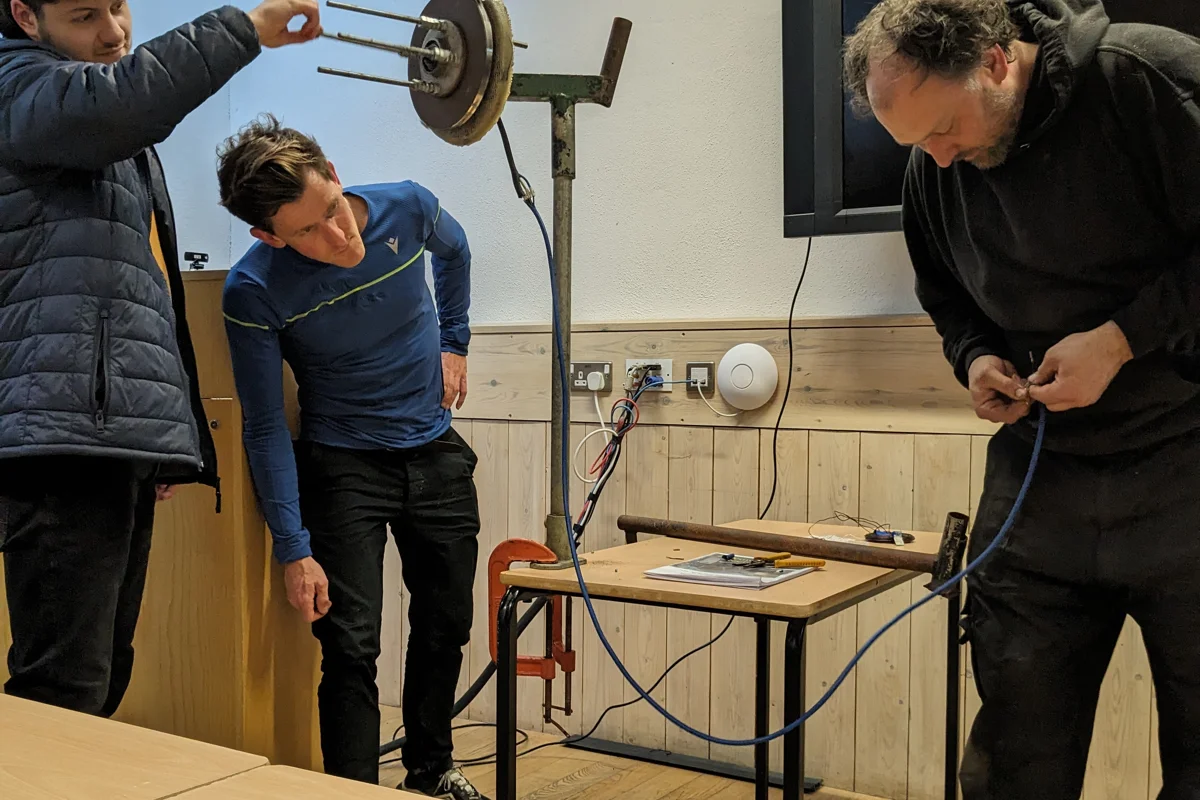
Day 2:
After breakfast, our Sunday began with a guided tour of the site, led by CAT veteran Paul. It quickly became evident that the site was steeped in history; decaying remains of winches and pulleys stand as a reminder of the centre’s past as an industrial slate quarry from the 1820’s until the mid-20th century, and Paul told us the story of CAT’s genesis as a centre focussed on finding ways for society to move away from fossil fuels in the wake of the 1970’s oil crisis. As the centre had grown and progressed, he told us, the focus expanded from renewable energy into a holistic exploration of sustainable living. As we toured the gardens, we learned how food is grown on location in beds and polytunnels served by soil-improving composters and wormeries, which turn waste into nutrients. Standing overlooking the lake we heard how the centre is entirely self-sufficient for water, using a sophisticated system of filtration and UV light treatment to transform water from the lake into the stuff that’s safe to drink. It was here that Paul introduced us to ‘quarry belly’, an uncomfortable sounding tummy upset apparently common among visiting city-folk who are more used to chlorinated water than the ‘live water’ provided on site. As a product of the British countryside I was naturally immune, but Miles proved less fortunate (though I suspect this may have more to do with a visit to a Burger King somewhere south of Abergavenny on the way home).
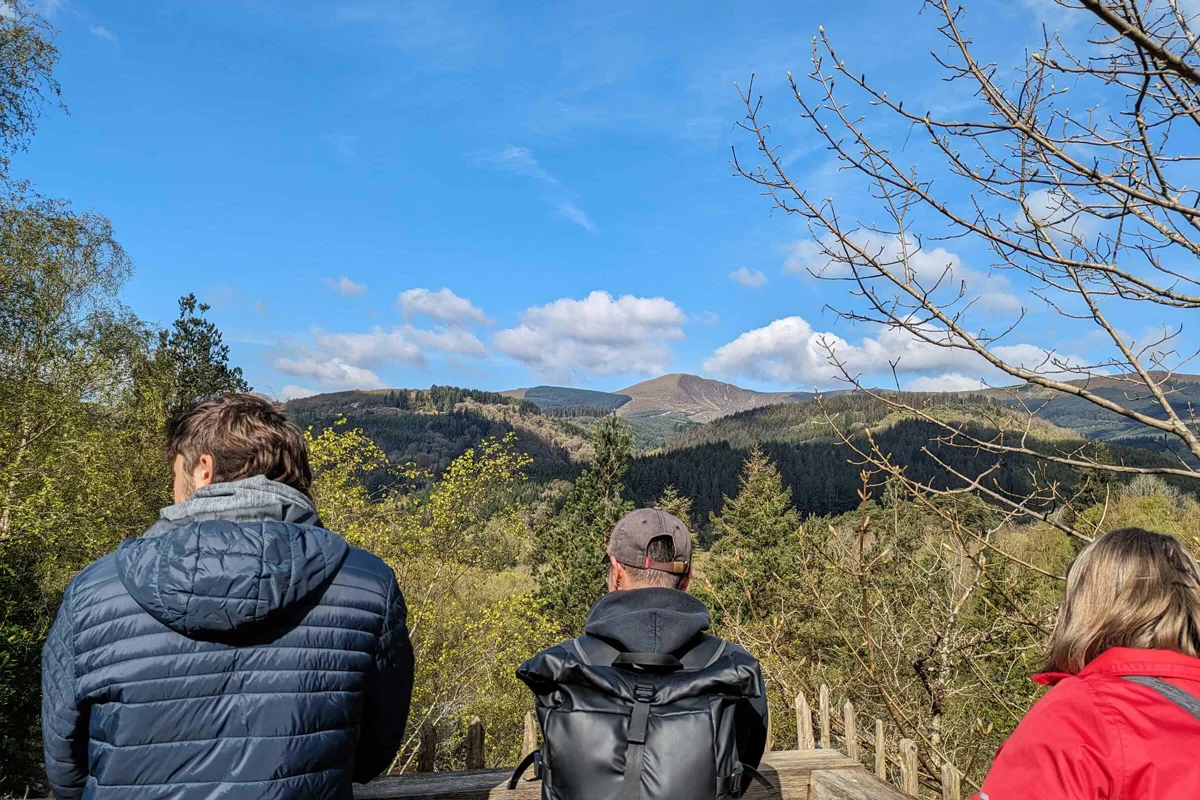
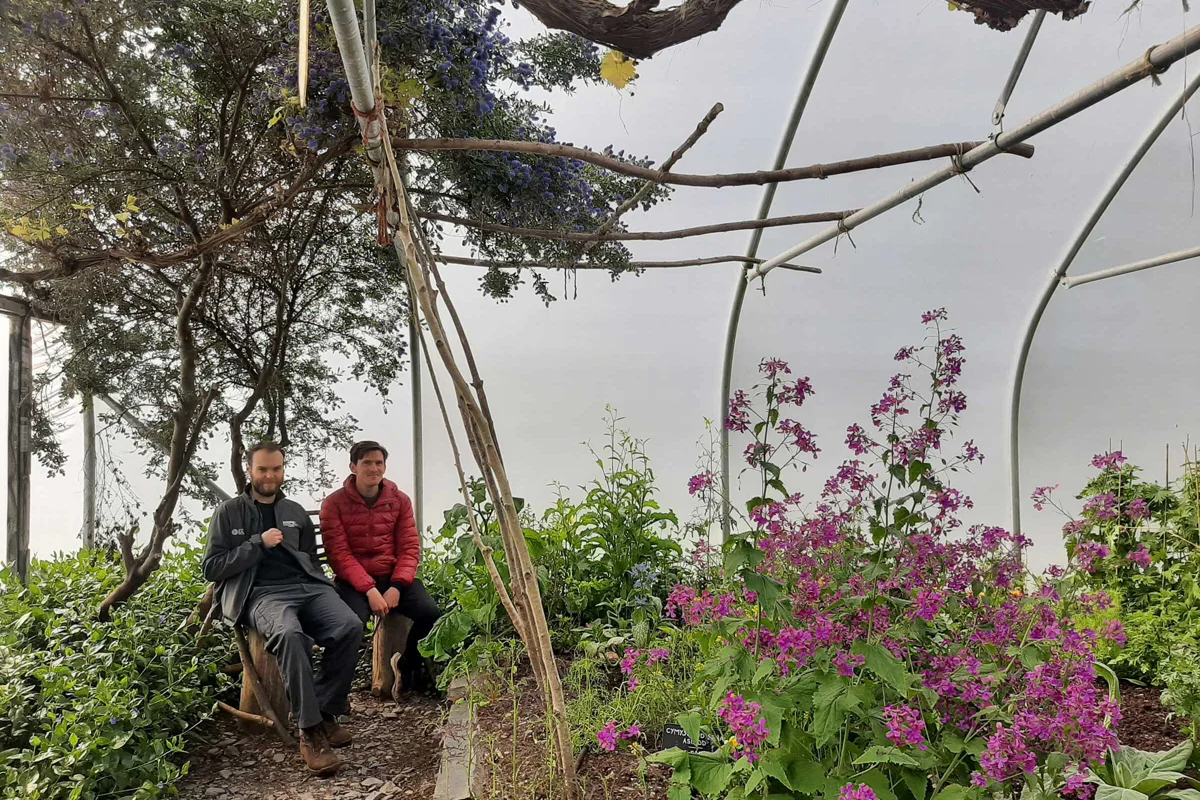
Next it was time for a sustainable building deep dive, with our two afternoon sessions. First up, a sustainable building tour, led by the centre’s natural materials specialist, Dieter. We began in the internationally famous WISE building, hearing how it had been designed to minimise energy consumption as much as possible both in its construction and operation. Moving outside we saw how CAT is still very much an active research centre, with experimental buildings testing out different sustainable building technologies scattered throughout the grounds. Dieter told us how these buildings are left standing so the centre can learn from the ones that work, and the ones that don’t. Some of the earlier buildings have proven to be critically flawed; one straw-bale building we toured was unbearably hot because it was too good at trapping heat, while other buildings have physically crumbled due to faults in their design or materials. Lessons learned from these experiments have helped inform the designs of newer, more successful projects like WISE, and they stand as a reminder of that learning process.
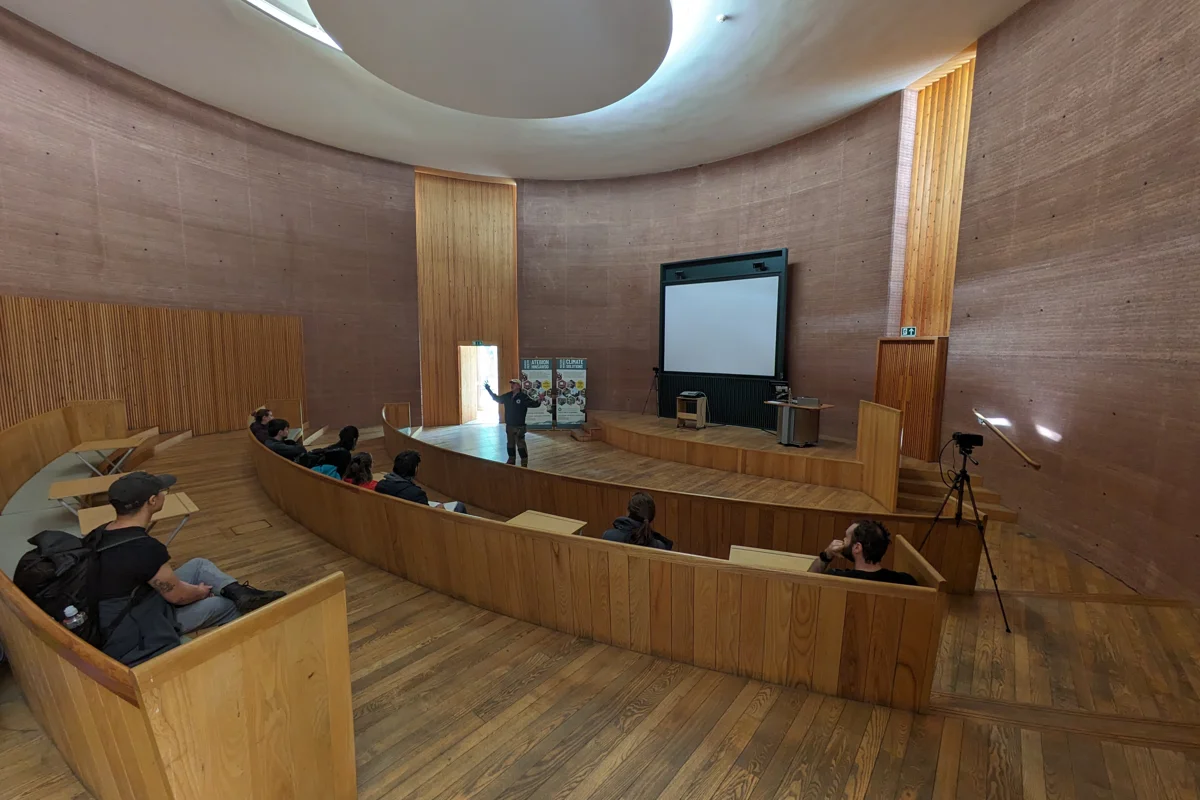

For the final activity of our visit, it was time to get our hands dirty as we made our own rammed earth brick. This was done by taking an appropriate mix of earth, adding just the right amount of water, and compacting it into a frame layer-by-layer until the finished brick was formed. At the end of it all – success! Our brick stood strong as the frame was removed, but there was no time to admire our handiwork as it was time to load up the cars and head back to Bath.
Takeaways:
Our weekend in Wales taught us a lot about how it’s possible to integrate sustainability into every aspect of our lives and work. From the food we eat, to the buildings we live in and the energy we use, there are always steps we can take to limit our carbon emissions and environmental impact as much as possible. Spending time with the staff also gave us valuable insight into how we can educate people from a diverse range of backgrounds about our work in a way which makes complicated issues and technologies as accessible as possible. We’re grateful to the Centre for Alternative Technology for hosting us for the weekend, to the AAPS CDT for supporting this visit, and to AAPS student Jesse Wise for her hard work organising the trip.
